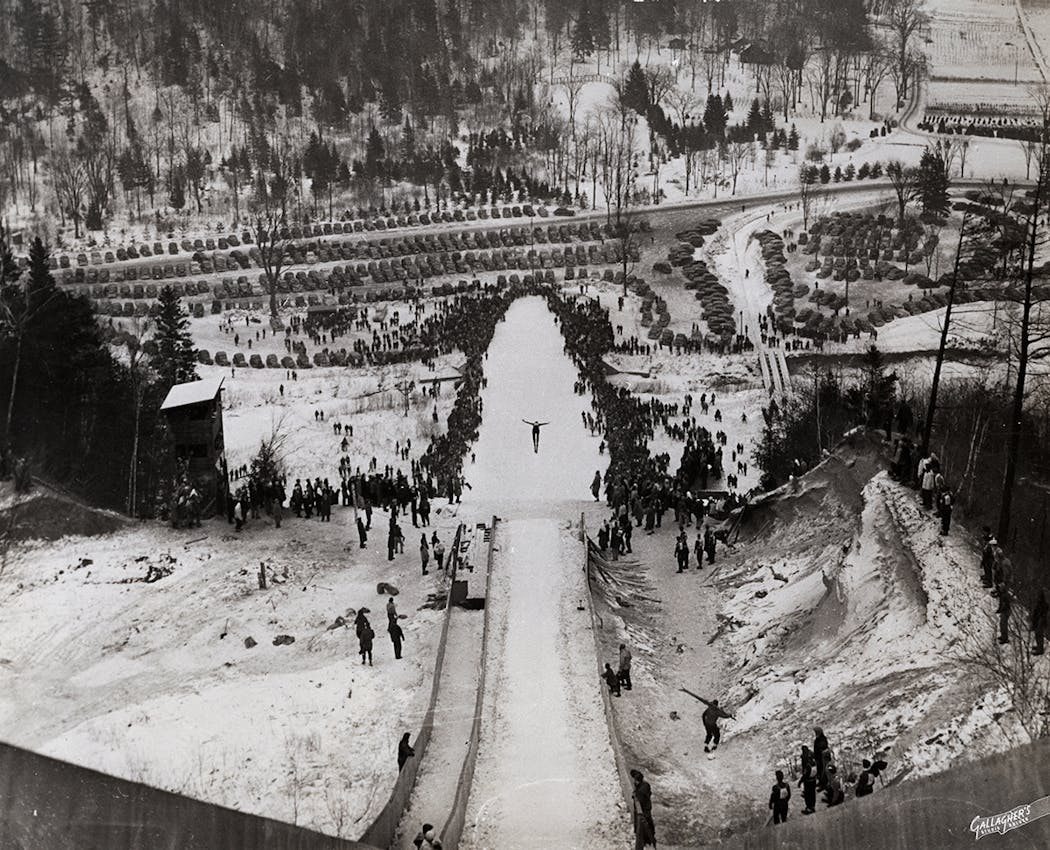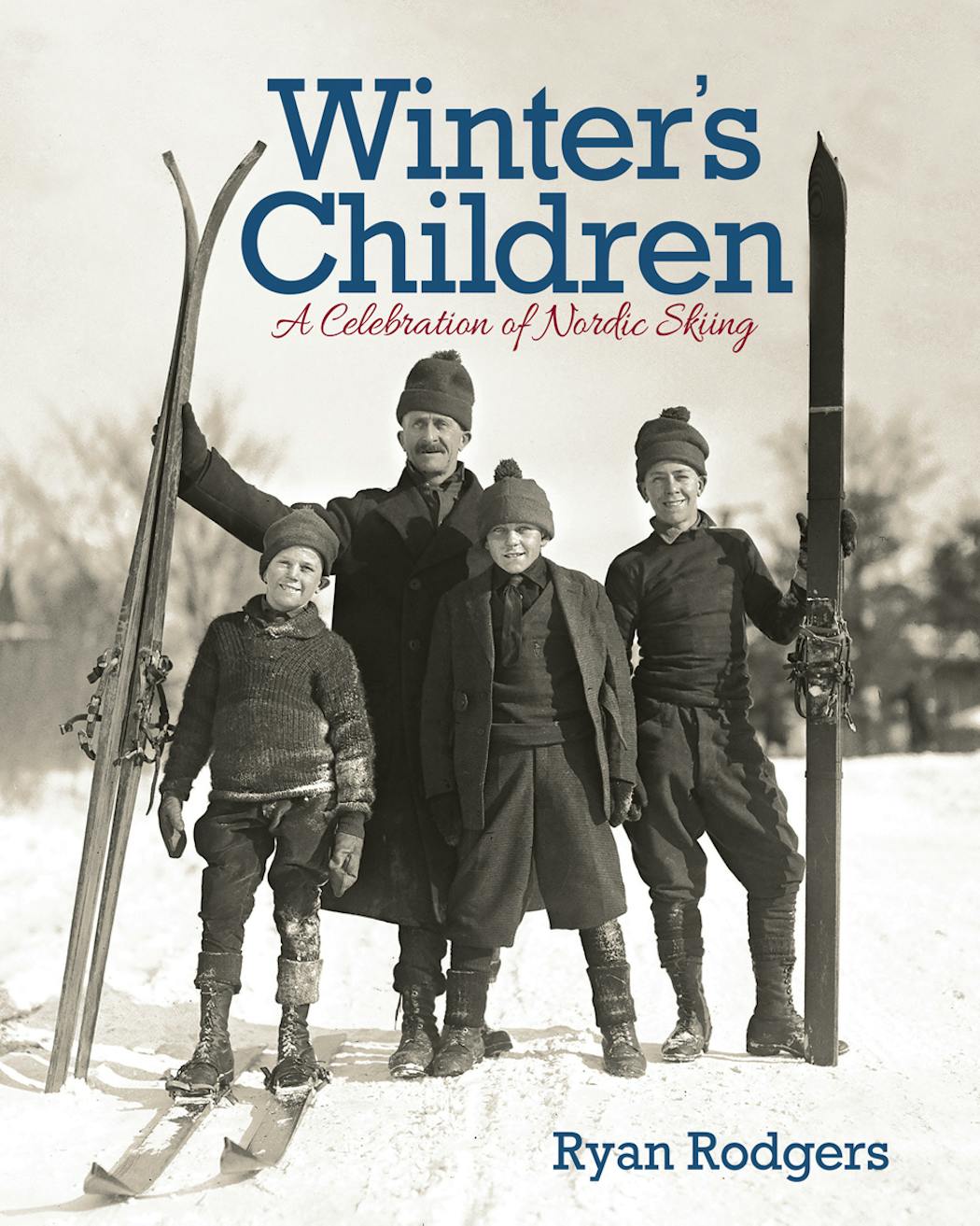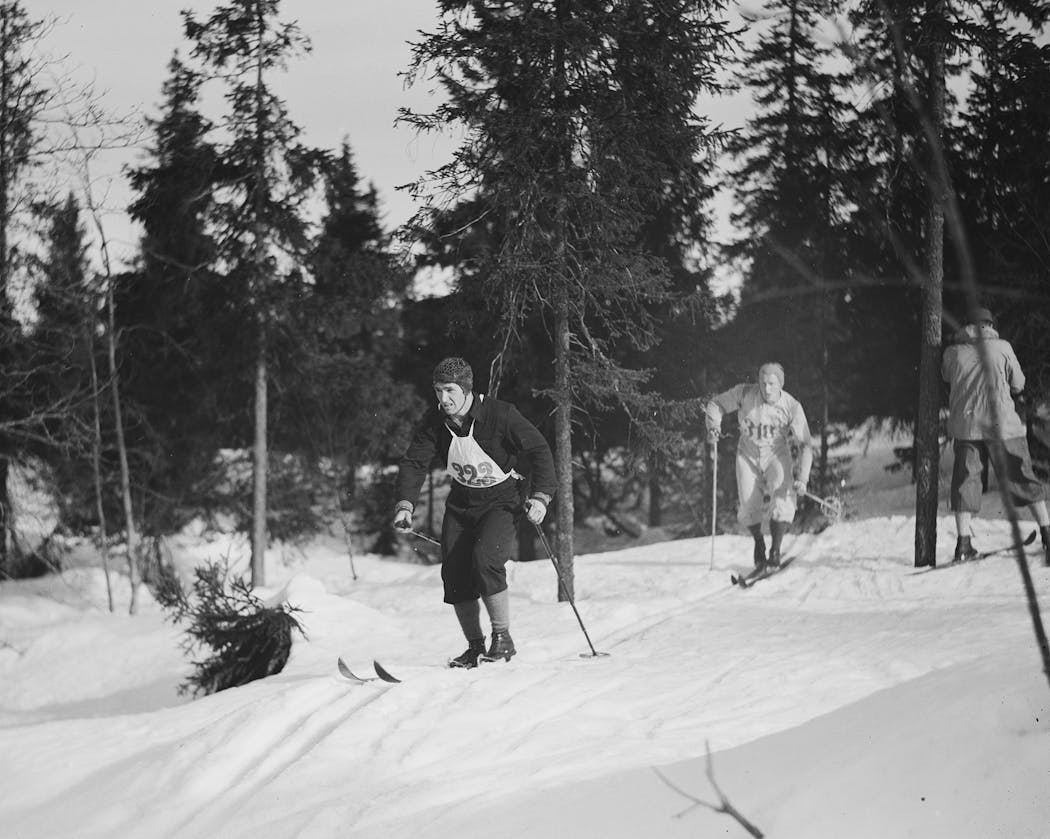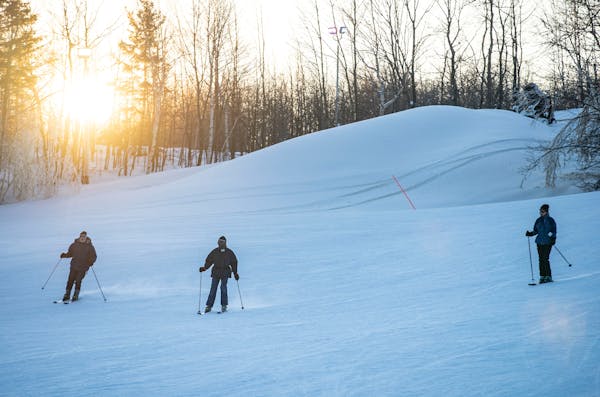In 1932, Minnesota became the first state to make skiing an official high school sport, fueled by the Scandinavian-heavy north country. The first regional Arrowhead High School Ski Meet included teams from Duluth, Coleraine, Virginia and Cloquet, and was held on Duluth's east side at Chester Park.
Yet the state's first official school tournament wasn't on skinny skis — it was jumping only. Chester Park also was known as Chester Bowl, ideally hilly terrain for skiers to get air and drop into. (The Duluth Ski Club had been jumping there since the early 1900s.) Cross-country skiing would be added to the tournament the following year by the Minnesota State High School League.
The story is but a thread in the expansive, remarkable fabric woven in the state by Nordic skiing captured from cap to knee breech in a new book from University of Minnesota Press, "Winter's Children: A Celebration of Nordic Skiing" by author Ryan Rodgers.
Rodgers goes back — way back — to the origin of the ski but briskly moves to its arrival (via Norway, of course) to the Upper Midwest and Minnesota, right up to cross-country's present popularity, including the golden speed of Afton's Jessie Diggins. And good thing, because there is a lot to tell and piece together of skiing's ups and downs — and ups.
Like why and how ski jumping was valued by many high schoolers over cross-country skiing all those years ago.
Beginning the project in 2019, Rodgers scoured old articles, visited historical centers, and at times sat in wax sheds to hear from families built and transformed by the sport. For all the rich details about Nordic skiing's characters and rhythms, Rodgers said he found himself producing something more.
"I didn't want to write it for skiers only," he said. "I wanted it to appeal to skiers, but I wanted to appeal to anyone. I wanted the story to stand up on its own."
In a conversation about his book, Rodgers talked about Nordic skiing's character-driven arc but, too, what's sliding away. His comments below were edited for length and clarity.
The depths of the sports and successes are interesting — and so much in Duluth from Chester Bowl to the Fond du Lac jump. Was Duluth the heart of skiing in Minnesota?
There are hot spots, and you could argue for a good long while it was in Duluth. I should add that writing the book caused me to move to Duluth. Talking to people up here, there is such a great outdoor ethic. It was talking to people and being struck by just how many people have this deep reverence for hiking and skiing and that kind of thing. You could make the argument that Duluth was the heart of the Nordic ski scene. It's become such a mainstream thing now, it really has followed the population and incomes. There are many exceptions, but now ski teams, for the most part, are down in the Twin Cities. At the time there was no other place that had the numbers of people passionately pursuing cross country skiing and jumping, too. What was so cool is I could trace it back, talking to people, and they'd tell about someone I'd never heard of. Then I'd look into this person and learn about this guy Pete Fosseide, for instance, or Erik Judeen. And you could trace the legacy back through the generations. It really was interconnected. The cross-country scene was largely based on these particular individuals. Jumping was a little different. There were some real national stars up here who don't fall into that legacy quite so neatly.
Some book readers might be surprised at the popularity of jumping, even as a high school element up until the late 1970s. It seemed more valued as a discipline over cross-country skiing.
Jumping was far more popular than cross-country, which was the traditional throwback, back to the Norwegian ideals of the sport. People, for the most part, had no interest in cross-country. Jumping was cool. Jumping was exciting. You could go pro, you could tour the country, you could get sponsored.
Really the downfall of jumping was brought along by downhill skiing. It had similar thrills and it was a heck of a lot easier: You didn't have to walk up the jump. You didn't have to prepare the jump. You just show up. The new gear made downhill much easier. Downhill took off; ski jumping faded and has continued to fade. Although it has stabilized as its own niche sport these days. There still are a lot of passionate jumpers out there, there just aren't that many of them.
Prior to World War II, it was mostly wealthy Americans acquainted with downhill. It was a glamorous, upper-class thing. With World War II, you have all these GIs in Europe, who get introduced to this glamorous, fun downhill scene. When they come back to the U.S., they take the idea of the European downhill experience and they start it up to a large scale here in the U.S. Plus, after World War II, people wanted to relax, they wanted to have fun, there were shortages, people were getting killed in combat, it was a tough time. After the war, the ethos of the country was living it up by downhill skiing. Cross-country skiing is a strenuous, hard sport, and that is at the heart of it. The time after World War II wasn't geared toward that. It wasn't until the next generation — the baby boomers — sought something different from their parents, they got into cross-country largely as a means of connecting with nature after an era that was pro-suburb and expansion.
Your work reminds me of other activities — like speed skating — that had wild viewing popularity, especially in the late 19th century and early 20th. Seems like there is a connection to some of the racing and jumping events.
I do know that (speed) skating was popular in Norway and was developing as a popular activity, as did cross-country skiing and ski jumping. Cross-country was never particularly popular 100 years ago. It had its adherents. In the 1920s and '30s, it was more popular than it was in the '50s and '60s. Ski jumping was a popular draw. Large tournaments. Many thousands of people showing up.
There weren't TVs. People were out. They wanted stuff to do. There was more of a public life back then. And there was just myriad other activities that people would go to.
Has the project changed your view of Nordic skiing?
The more I thought about it, the more I realized I have taken for granted the conditions that allow a person to put on a pair of skis and set out across the landscape. The more I thought about, the more I realized I was writing an elegy to the kind of skiing which I value most, which is skiing through the woods in natural conditions.
We are losing that type of skiing. The natural snow season already is shorter and getting short. And it doesn't happen at once. It's like you're a kid nipping booze from your parents' liquor cabinet an ounce or two at a time, and then one day Dad goes to mix a Bloody Mary and it's all gone.
On the other hand, Nordic skiing as a competitive sport is continuing to gain popular appeal. That's because each year, more places are making snow. More and more kids are getting into the sport. Parents have realized cross-country is a fantastic, healthy lifetime sport. It's a really healthy culture.
Cross-country used to be the sport of working-class Scandinavian folks, but now it really has become this urban and suburban sport for the upper-middle class. There are efforts to counteract that like that come out on both sides of the Loppet Foundation. On one hand, they have this really expensive, elite training program, but on the other hand, they have a very cool elementary school ski curriculum in Minneapolis schools, where most of the kids are of color.
[Cross-country skiing] does have an elitist edge, but hopefully these efforts to draw in more skiers of different racial and economic backdrops — hopefully those efforts will work and will make it the good pure sport the Norwegians always hoped it would be.
Neal: Trade season is here ... and now it's time for the Twins to act

Twins lose second in a row to Blue Jays as bullpen falters late
What is the 'House settlement,' and what does it mean for the Gophers and NCAA?

Souhan: Anxiety and depression in the NFL helped inspire Lindsey Young's children's book





